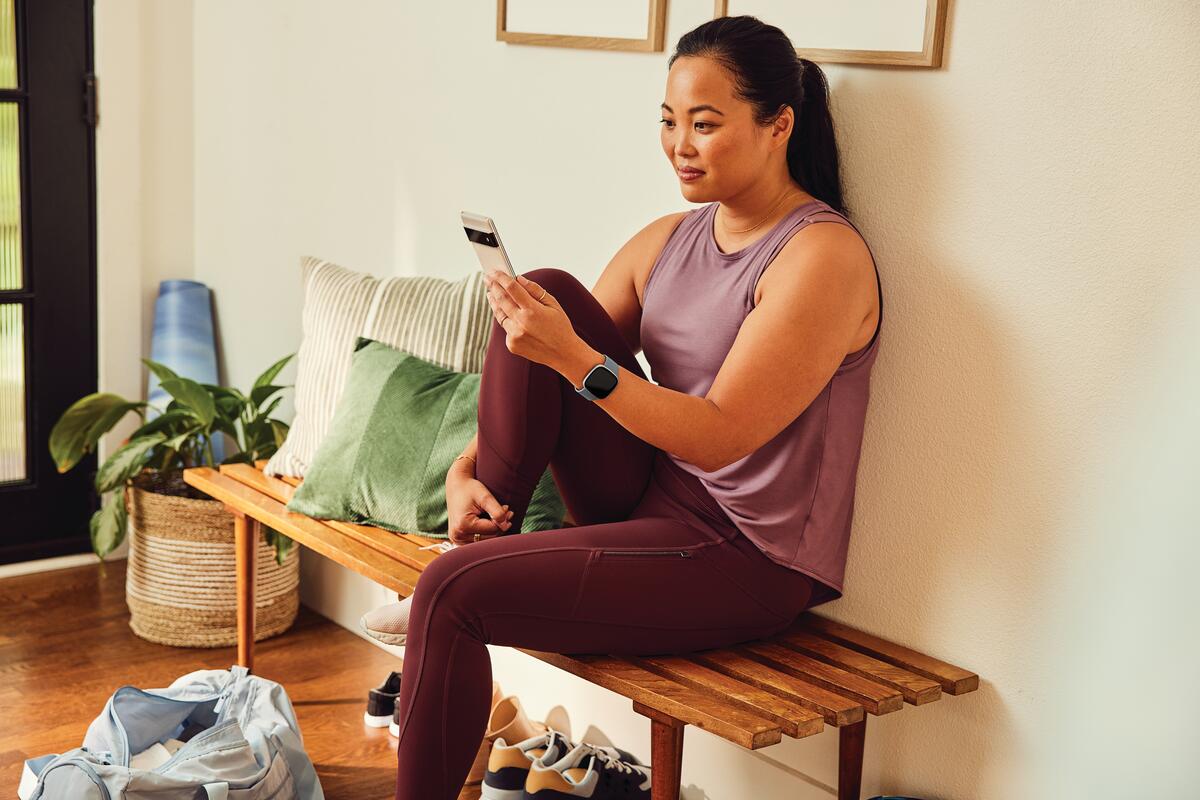Tapping the Potential of Wearables in Early Disease Detection
Last year, 62-year-old Don Morrell received a notification from his Fitbit device that his heart was in a state of atrial fibrillation (AFib). The otherwise healthy Army veteran decided to make an appointment with his primary care doctor and then a cardiologist, who discovered an aortic aneurysm. This potentially life-threatening condition is now being monitored by his team of doctors.
Don also self-monitors, using his Fitbit to check for AFib regularly, track his physical activity, and ensure his heart rate stays within the recommended range during exercise. That’s made possible by Fitbit’s FDA-approved algorithm, which accurately identifies AFib episodes 98% of the time.
I share this story to illustrate what’s possible when wearable technology is applied as an early detection tool. It made a difference in one man’s life – now, picture what it can do on a population scale. We’ve only scratched the surface on the potential for wearable technology in early disease detection, but already the results and impact are significant for conditions like AFib.
Early detection of a silent condition
AFib is an irregular heartbeat that can lead to various heart-related complications, including blood clots and stroke. It’s the most common type of heart arrhythmia, impacting an estimated 12 million people in the U.S.
One of the challenges of AFib is that it can be sporadic and difficult to detect as there are often no symptoms. And those with untreated AFib are five times more likely to have a stroke.
Since Fitbit launched its PPG (photoplethysmography) algorithm to identify atrial fibrillation last year, 2 million Fitbit device users have already signed up to receive notifications for irregular heart rhythms. Once notified of the irregularity – there’s never a diagnosis – they’re instructed to discuss the information with their healthcare professional for further medical advice or treatment.
Applying this detection capability is effective because it’s easy and unobtrusive in a person’s daily life. It doesn’t require special equipment or a trip to the doctor’s office. The sensor simply analyzes heart rhythm in the background while the user is still or sleeping, and looks out for potential signs.
This is an incredible step toward early detection of a preventable condition, which can then be managed with medication and other treatments. The result is a better quality of life at the individual level, and it also vastly decreases the cost of treating a catastrophic medical event, like stroke.
Effective and cost-effective population health
Herein lies the incredible opportunity for payers — particularly those transitioning to a more proactive approach to healthcare, like a value-based care (VBC) model that aligns incentives across the healthcare system to improve health outcomes and reduce costs, often through proactive measures.
Consider this: 70 percent of people with AFib are between the ages of 65 and 85. At the same time, one in eight cases go undetected, more than half of which are at moderate to high risk of stroke. When applied to a high-risk group like this, adding accurate and reliable AFib detection has tremendous potential for population-level health. It can save lives, and it drastically reduces the cost of care.
We know that early alerts lead to faster diagnoses and ultimately better health outcomes. A study in JAMA suggests that this approach would be cost-effective, and even more so with wearables costing $150 or less. Wearables can be implemented in plan design, including Medicare Advantage plans, to help provide preventative care and early detection. They function like a car’s check engine light, warning users when they may need to check in with their doctor before an emergency occurs.
What’s next in early detection
When I think back to how wearables have evolved in the last 10 years, it’s astonishing how far they’ve come: the sensor technology is smaller and more advanced, allowing wearable devices to be smarter and capture more health signals. Fitbit’s mission is to help everyone live a healthier life – and to do that, we’re focused on bringing these key health signals to products across all price points. What was once the purview of elite athletes, things like detailed sleep and heart-rate tracking, are health features that everyone should be able to access through wearables.
And there’s still so much untapped potential: we’re only in the early stages of exploring wearables as a tool for disease detection, but we know there’s ample opportunity for them to be used for more.
There’s also evidence that consumer wearables have potential to be used for early detection of infectious diseases, such as flu or respiratory illness. There may be a future, for example, where users who are getting sick could be notified before their symptoms even start – and both treat their sickness earlier and avoid spreading it.
The big picture: Empowering individuals transforms population health
As wearables like Fitbit become more sophisticated, they have an increasingly important role to play in helping people take the next best step – whether that’s to prevent disease, detect it, or manage it (but that topic is for next time!).
Equipping individual members with more and better information about what’s happening behind the curtain, from their sleep patterns to their stress levels to their heart rhythm, can change lives. And encouraging them to use that health information to work more closely and more proactively with their providers can make a huge difference for population health at scale.
That’s good news for everyone invested in VBC.



